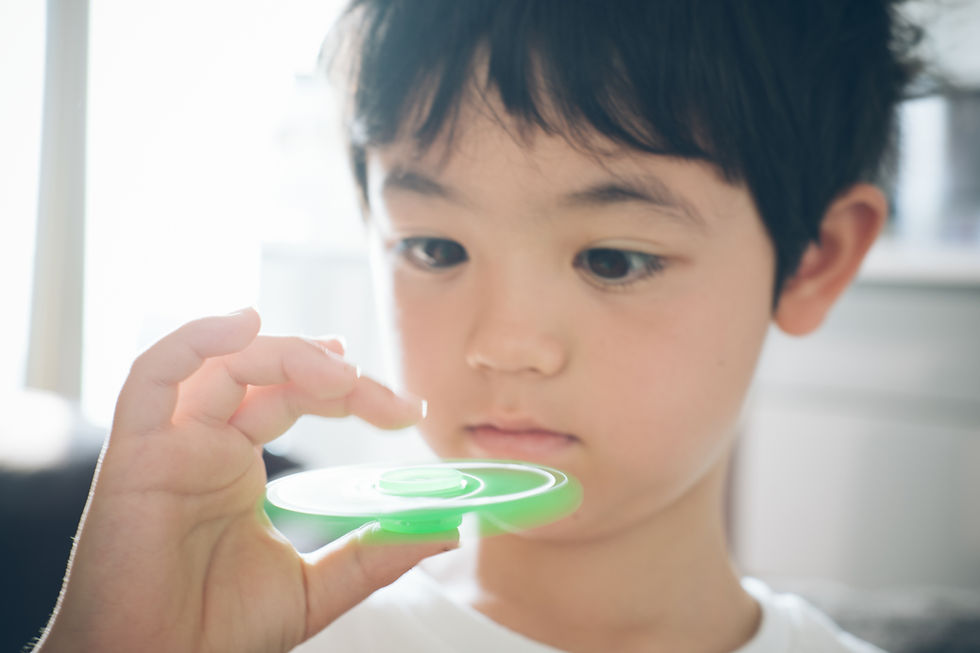Adaptive Fitness Strategies for Children with ASD
- Devin Suarez
- Nov 3
- 4 min read
Children with Autism Spectrum Disorder (ASD) often face unique challenges when it comes to physical activity. Sensory sensitivities, motor skill delays, and social communication difficulties can make traditional fitness programs less effective or even overwhelming. Yet, staying active is crucial for their physical health, emotional well-being, and social development. This post explores practical, adaptive fitness strategies designed specifically to support children with ASD, helping them build confidence, improve coordination, and enjoy exercise in a way that suits their needs.
Understanding the Fitness Needs of Children with ASD
Children with ASD vary widely in their abilities and preferences, but many share common challenges that affect fitness participation:
Sensory Sensitivities: Bright lights, loud noises, or certain textures can cause discomfort or distress.
Motor Skill Difficulties: Fine and gross motor skills may develop more slowly, affecting balance, coordination, and strength.
Social Interaction Barriers: Group activities or team sports can be intimidating or confusing.
Routine Dependence: Sudden changes in activity or environment may cause anxiety.
Recognizing these factors is the first step in creating a fitness plan that feels safe, enjoyable, and effective.
Creating a Supportive Environment
A welcoming environment encourages children with ASD to engage in physical activity without fear or frustration. Consider these elements:
Predictable Routine: Use a consistent schedule and clear transitions between activities.
Visual Supports: Charts, pictures, or videos can help explain exercises and expectations.
Quiet Spaces: Provide a calm area for breaks if sensory overload occurs.
Minimal Distractions: Choose locations with low noise and limited visual clutter.
For example, a small gym corner with soft mats, simple equipment, and visual instructions can make a big difference.
Tailoring Activities to Individual Strengths and Interests
Children with ASD often respond best to activities that align with their preferences and abilities. Here are some ideas:
Sensory-Friendly Exercises: Swimming or water play can soothe sensory needs while promoting strength and coordination.
Balance and Coordination Games: Activities like walking on a balance beam or hopping through hoops improve motor skills.
Repetitive Movements: Repetitive exercises such as jumping jacks or running laps can be calming and build endurance.
Interest-Based Activities: If a child loves animals, try movements that mimic animal actions like crawling like a bear or hopping like a frog.
By focusing on what the child enjoys, fitness becomes a positive experience rather than a chore.

Child practicing balance on a beam in a sensory-friendly gym designed for children with ASD
Using Visual and Verbal Cues Effectively
Communication plays a key role in fitness for children with ASD. Clear, simple instructions help reduce confusion:
Visual Demonstrations: Show how to perform each exercise step-by-step.
Short, Direct Commands: Use concise language like "jump," "run," or "stop."
Positive Reinforcement: Praise efforts and progress to build motivation.
Timers and Signals: Use timers or hand signals to indicate when to start or stop.
For example, a coach might demonstrate a stretch, then say, “Reach up high,” while showing the movement again.
Incorporating Social Skills Through Fitness
Physical activity can also support social development when adapted appropriately:
Partner Exercises: Simple paired activities like passing a ball encourage cooperation.
Group Games with Clear Rules: Games like “Simon Says” or relay races with structured turns help practice listening and taking turns.
Role-Playing Scenarios: Pretend play combined with movement can build communication skills.
These activities should be introduced gradually, respecting each child’s comfort level with social interaction.
Equipment and Tools That Help
Certain tools can make fitness more accessible and enjoyable:
Weighted Vests or Blankets: Provide calming deep pressure during activity.
Therapy Balls: Improve balance and core strength.
Resistance Bands: Build muscle strength with controlled movements.
Visual Schedules: Help children anticipate what comes next.
Using these tools under supervision ensures safety and maximizes benefits.
Sample Adaptive Fitness Routine
Here’s a simple routine designed for children with ASD that can be adjusted based on individual needs:
Warm-Up (5 minutes)
Marching in place
Gentle arm circles
Balance and Coordination (10 minutes)
Walking on a low beam or taped line
Hopping on one foot (use support if needed)
Strength and Endurance (10 minutes)
Wall push-ups
Sitting and standing from a chair repeatedly
Sensory Play (10 minutes)
Jumping on a trampoline
Playing with a therapy ball
Cool-Down (5 minutes)
Deep breathing exercises
Gentle stretching
Adjust timing and intensity based on the child’s response and energy levels.
Tips for Parents and Caregivers
Parents and caregivers play a vital role in encouraging fitness:
Be Patient: Progress may be slow but consistent effort pays off.
Celebrate Small Wins: Every new skill or longer activity time is a success.
Stay Flexible: Adapt activities if a child shows discomfort or disinterest.
Model Active Behavior: Children often imitate adults, so stay active yourself.
Seek Professional Guidance: Occupational therapists or adapted physical education specialists can offer personalized advice.
When to Seek Professional Support
If a child struggles significantly with motor skills or sensory issues, professional help can make a difference. Specialists can:
Assess motor development and sensory processing
Design individualized fitness plans
Provide one-on-one coaching or therapy
Train parents and educators on adaptive techniques
Early intervention often leads to better outcomes.
Fitness for children with ASD is not one-size-fits-all. By understanding their unique needs and preferences, caregivers and educators can create adaptive strategies that make exercise enjoyable and beneficial. The goal is to build physical skills, boost confidence, and support overall well-being in a way that respects each child’s individuality.
Encourage movement, celebrate progress, and keep exploring new activities that inspire joy and growth. The journey to fitness can be a rewarding adventure for children with ASD and those who support them.





Comments